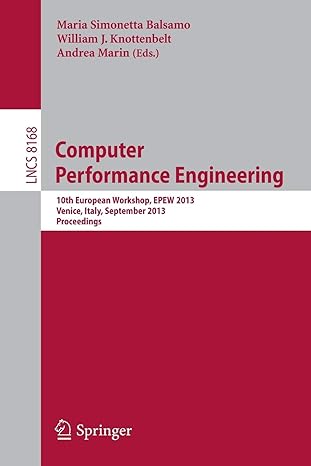Question
Scenario: - 1. After login to the SPS, the lab technician selects to make a request for services. 2. The SPS displays the services it
Scenario: -
1. After login to the SPS, the lab technician selects to make a request for services.
2. The SPS displays the services it provides. Each service has a code [SC], a description [DESC], and a price per unit [PR]. For instance, the service S1 price is 5 OMR per unit.
3. To make a request, the technician selects one or more services. For each selected service, the technician enters the number of units [NU] requested. Once the technician completes the request, the SPS displays the summary, including all the information of the request for services with the total to pay [AMT] for the request.
4. Once the technician confirms, the SPS saves the request with a request ID [RID], the technician user name [UN], the date of the request [RDATE], the total amount [TAMT], and a status [STA] with initial value is ‘Unpaid’. Then it updates the balance [BAL] of the account of the technician by increasing it with the amount [TAMT] of the request.
5. At any time, the technician can pay a request. S/he enters the request RID. The SPS displays the amount for this RID. Before entering the amount to pay [PAMT], the technician may request to use a discount code, in this case a discount is computed and the new amount is displayed. If the payment is by card, the card is checked against an authorization system (e.g., visa). The SPS updates the amount [TAMT] of the request with the PAMT (TAMT-=PAMT), its status [STA] ‘paid’ or ‘partially paid’, and the balance [BAL] of the technician (BAL-= PAMT), prints out a receipt, and records the payment with a RID, a receipt reference [REF], payment date (PDATE), and amount paid [PAMT].
Note
request may have many services and a service is requested in many requests. NU (Number of Units) may be different for each service in each request. For instance, in the request R1, the service S1 requires 2 units whereas in the request R2, the service S1 requires 3 units. Also, a technician may have many requests but a request belongs to only one technician.
Q3 Draw a Design Class Diagram, limiting to the classes from where you instantiate the objects involved in the realization of this use case, showing their attributes, operations, and relationships.
Step by Step Solution
There are 3 Steps involved in it
Step: 1

Get Instant Access to Expert-Tailored Solutions
See step-by-step solutions with expert insights and AI powered tools for academic success
Step: 2

Step: 3

Ace Your Homework with AI
Get the answers you need in no time with our AI-driven, step-by-step assistance
Get Started


